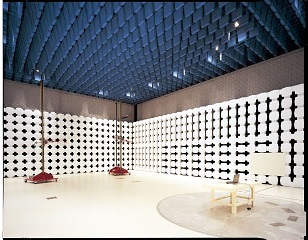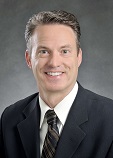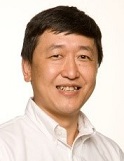Half-Day Workshop
This is a free workshop open to IEEE members and guests, but you must register IN ADVANCE no later than Thursday, February 7 to ensure adequate seating and catering. Click here to register on line. SPACE IS LIMITED – RESERVE EARLY TO SAVE YOUR SPACE!!!

Improving the Understanding and Efficiency of
EMC, RF, Microwave and Antenna Measurements
Presentation 1: The Impact of Cables and Connectors on Radio Frequency and Microwave Measurement Uncertainties By Dennis Lewis, Boeing, Seattle, Washington
Presentation 2 with Demonstration: Advanced Antenna Measurement Techniques Using Time Domain Transformation By Zhong Chen, EMC Society Distinguished Lecturer, ETS-Lindgren, Cedar Park, Texas
A live demonstration showing “real world” time domain measurements will follow the presentation.
See Presentation Abstracts and Speaker Bios Below
Date and Time
Location
Hosts
Registration
-
 Add Event to Calendar
Add Event to Calendar
- Common Space Brewery and Tasting Room
- 3411 West El Segundo Blvd.
- Hawthorne, California
- United States
- Room Number: The Gallery
- Contact Event Host
-
Janet O'Neil
j.n.oneil@ieee.org
425 443 8106
- Co-sponsored by MTT/AP Joint Chapter
Speakers
 Dennis Lewis of Boeing, Seattle, WA
Dennis Lewis of Boeing, Seattle, WA
The Impact of Cables and Connectors on Radio Frequency and Microwave Measurement Uncertainties
Microwave test and measurement equipment is used for many applications, including component measurements, electromagnetic compatibility testing, metrology and wireless environment assessments. Much of this equipment requires special care and consideration in order to eliminate damage and maintain a high level of accuracy. When developing these high frequency measurement systems and evaluating system performance, it is common to consider the warranted equipment specifications. Very often, however, the error contribution of cables and connectors to the system uncertainty is overlooked. Impedance mismatch is typically the largest source of measurement error and is largely influenced by the cables and connectors used within the system. Something as insignificant as a $30 connector can adversely affect the performance of a system costing several hundred thousand dollars. This presentation provides an overview of commonly used cables and connectors and discusses some of the errors associated with them. The impact of these errors on overall measurement system uncertainties is discussed. The presentation finishes with some practical examples and real world applications to help guide participants in the selection and use of cables and connectors and more accurately assess system performance.
Biography:
Dennis Lewis received his BS EE degree with honors from Henry Cogswell College and his MS degree in Physics from the University of Washington. He has worked at Boeing for 30 years and is recognized as a Technical Fellow. He currently has leadership and technical responsibility for the primary RF, Microwave and Antenna Metrology labs. Dennis holds 10 patents and is the recipient of the 2013 & 2015 Boeing Special Invention Award. He is a member of the IEEE and several of its technical societies including the Microwave Theory and Techniques Society (MTT-S), the Antennas and Propagation Society and the Electromagnetic Compatibility (EMC) Society. He serves as a Board Member and is a past Distinguished Lecturer for the EMC Society. He is a Senior Member, serves as Vice President on the Board of Directors for the Antenna Measurements Techniques Association (AMTA), and chaired its annual symposium in 2012. Dennis is a part time faculty member teaching a course on Measurement Science at North Seattle College and is chair of the Technical Advisory Committee. His current technical interests include aerospace applications of reverberation chamber test techniques as well as microwave measurement systems and uncertainties.
 Zhong Chen of ETS-Lindgren, Cedar Park, Texas
Zhong Chen of ETS-Lindgren, Cedar Park, Texas
Advanced Antenna Measurement Techniques Using Time Domain Transformation, includes Live Demonstration
Time domain gating is an effective technique to remove reflections in antenna measurements. The vector frequency response is transformed to time domain via inverse Fourier transforms, and a time domain gate can be applied. This function is included in commercial vector network analyzers. Although its applications seem straightforward, the implementations and limitations can feel like a “black-box”. We provide an “under-the-hood” review of this popular function, and explain the nuances in the time domain gating applications which can affect the measurement uncertainties. This presentation strives to provide an in-depth understanding of the time domain-gating algorithm. Topics discussed include aliases, resolution, typical EMC antenna time signatures, window functions, and time domain gate shapes, etc. We then discuss the gating band edge errors (or “edge effects”), mitigation techniques and the limitations of the post-gate renormalization method used in a VNA. We introduce an alternative edge mitigation method, which improves the accuracy for many antenna measurement applications. A live demonstration showing “real world” measurements will follow the presentation.
Biography:
Zhong Chen is the Director of RF Engineering at ETS-Lindgren, located in Cedar Park, Texas. He has over 20 years of experience in RF testing, anechoic chamber design, as well as EMC antenna and field probe design and measurements. He is an active member of the ANSI ASC C63® committee and Chairman of Subcommittee 1 that is responsible for the antenna calibration and chamber/test site validation standards. He is chair of the IEEE Standard 1309 committee responsible for developing calibration standards for field probes, and IEEE Standard 1128 for absorber measurements. His research interests include measurement uncertainty, time domain measurements for site validation and antenna calibration, and development of novel RF absorber materials. Zhong Chen received his M.S.E.E. degree in electromagnetics from the Ohio State University at Columbus. He may be reached at zhong.chen@ets-lindgren.com.
Agenda
12:00 pm – 1:00 pm Registration and Complimentary Lunch
1:00 pm – 4:00 pm Presentations and Live Demonstration, including a break between speakers
4:00 pm – 5:00 pm Social time with speakers; no host beer
Note the expert speakers are traveling to California specifically for this workshop!

